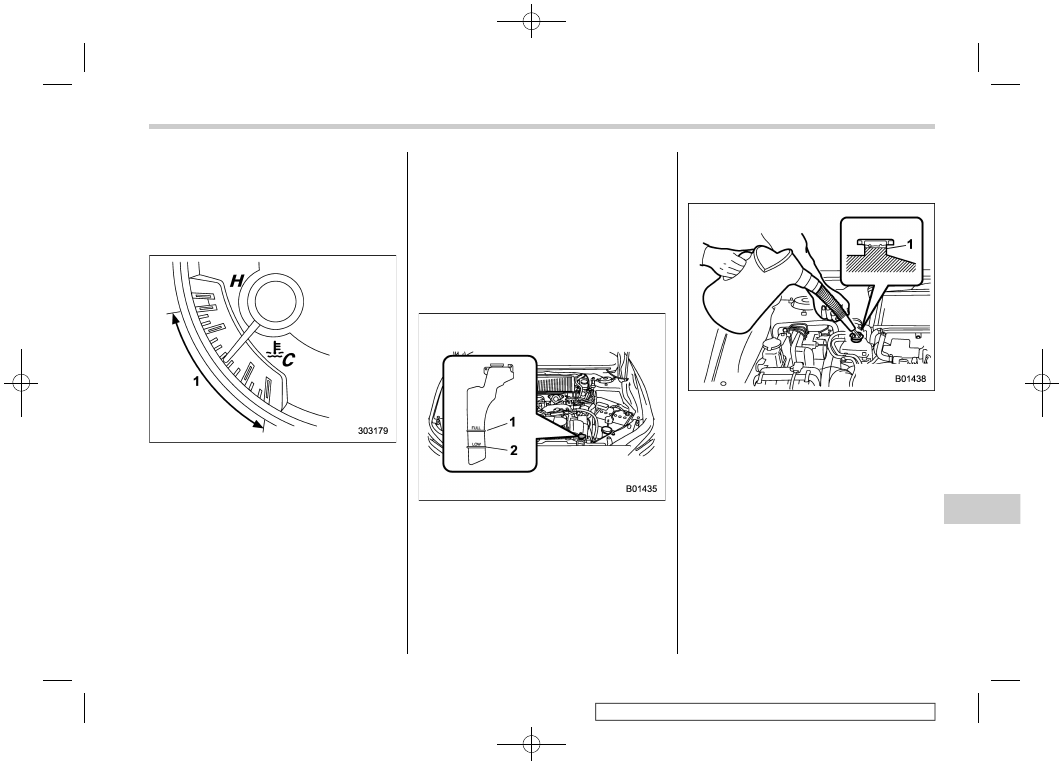Subaru WRX STI (2019 year). Manual - part 25

(409,1)
北米Model "A1720BE-A" EDITED: 2018/ 3/ 9
&
Cooling fan, hose and con-
nections
Your vehicle employs an electric cooling
fan which is thermostatically controlled to
operate when the engine coolant reaches
a specific temperature.
Temperature gauge
1)
Normal operating range
If the radiator cooling fan does not operate
even when the engine coolant tempera-
ture gauge exceeds the normal operating
range, the cooling fan circuit may be
defective. Refer to “Temperature gauge”
F3-11.
Check the fuse and replace it if necessary.
Refer to “Fuses” F11-43 and “Fuses and
circuits” F12-10.
If the fuse is not blown, have the cooling
system checked by your SUBARU dealer.
If frequent addition of coolant is necessary,
there may be a leak in the engine cooling
system. It is recommended that the cooling
system and connections be checked for
leaks, damage, or looseness.
&
Engine coolant
!
Checking the coolant level
1)
“FULL” level mark
2)
“LOW” level mark
Check the coolant level at each fuel stop.
1. Check the coolant level on the outside
of the reservoir while the engine is cool.
2. If the level is close to or lower than the
“LOW” level mark, add coolant up to the
“FULL” level mark. If the reserve tank is
empty, remove the radiator cap and refill
coolant up to just below the filler neck as
shown in the following illustration.
STI
1)
Fill up to this level
– CONTINUED –
Maintenance and service/Cooling system
11-17
11